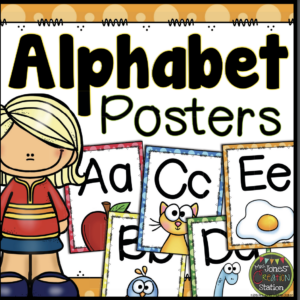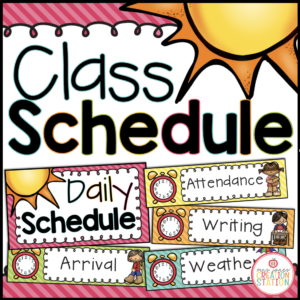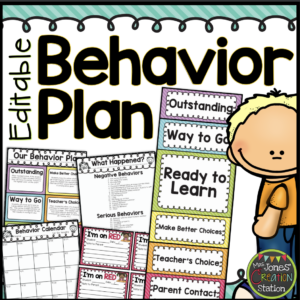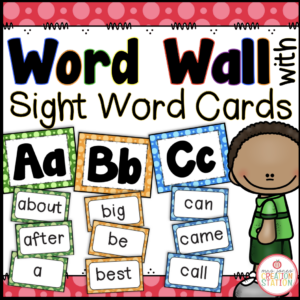KINDERGARTEN HOMEWORK MEGA-BUNDLE
UPDATED FOR 2021-2022!
Use these resources to create easy-to-use Homework Packets for your students. Edit the text to meet your learners specific needs! (editing is only available in this bundle)
See how to set up your learners’ homework folder here!
Make homework successful in your classroom with these homework tips!
____________________________________________________________________
This MEGA-BUNDLE includes EDITABLE VERSIONS of…
Kindergarten Homework Organization Labels, Notes and Homework Helpers
August Kindergarten Homework Packet
September Kindergarten Homework Packet
October Kindergarten Homework Packet
November Kindergarten Homework Packet
December Kindergarten Homework Packet
January Kindergarten Homework Packet
February Kindergarten Homework Packet
March Kindergarten Homework Packet
April Kindergarten Homework Packet
May Kindergarten Homework Packet
LEARNING STANDARDS INCLUDED IN THIS RESOURCE
Common Core Standards
Language Arts
CCSSL.K.1a
Print many upper- and lowercase letters.
CCSSL.K.1c
Form regular plural nouns orally by adding /s/ or /es/ (e.g., dog, dogs; wish, wishes).
CCSSL.K.2
Demonstrate command of the conventions of standard English capitalization, punctuation, and spelling when writing.
CCSSL.K.2a
Capitalize the first word in a sentence and the pronoun I.
CCSSRF.K.2
Demonstrate understanding of spoken words, syllables, and sounds (phonemes).
CCSSRF.K.2a
Recognize and produce rhyming words.
CCSSRF.K.2b
Count, pronounce, blend, and segment syllables in spoken words.
CCSSRF.K.2d
Isolate and pronounce the initial, medial vowel, and final sounds (phonemes) in three-phoneme (consonant-vowel-consonant, or CVC) words. (This does not include CVCs ending with /l/, /r/, or /x/.)
CCSSRF.K.3c
Read common high-frequency words by sight (e.g., the, of, to, you, she, my, is, are, do, does).
Math
CCSSK.CC.A.1
Count to 100 by ones and by tens.
CCSSK.CC.A.2
Count forward beginning from a given number within the known sequence (instead of having to begin at 1).
CCSSK.CC.A.3
Write numbers from 0 to 20. Represent a number of objects with a written numeral 0-20 (with 0 representing a count of no objects).
CCSSK.CC.B.4
Understand the relationship between numbers and quantities; connect counting to cardinality.
CCSSK.CC.C.6
Identify whether the number of objects in one group is greater than, less than, or equal to the number of objects in another group, e.g., by using matching and counting strategies.
CCSSK.G.A.2
Correctly name shapes regardless of their orientations or overall size.
CCSSK.G.A.3
Identify shapes as two-dimensional (lying in a plane, “flat”) or three-dimensional (“solid”).
CCSSK.MD.A.1
Describe measurable attributes of objects, such as length or weight. Describe several measurable attributes of a single object.
CCSSK.MD.A.2
Directly compare two objects with a measurable attribute in common, to see which object has “more of”/“less of” the attribute, and describe the difference. For example, directly compare the heights of two children and describe one child as taller/shorter.
CCSSK.NBT.A.1
Compose and decompose numbers from 11 to 19 into ten ones and some further ones, e.g., by using objects or drawings, and record each composition or decomposition by a drawing or equation (e.g., 18 = 10 + 8); understand that these numbers are composed of ten ones and one, two, three, four, five, six, seven, eight, or nine ones.
CCSSK.OA.A.2
Solve addition and subtraction word problems, and add and subtract within 10, e.g., by using objects or drawings to represent the problem.
Texas Essential of Knowledge and Skills
Language Arts
TEKSLA.K.2.A.i
Developing and sustaining foundational language skills: listening, speaking, reading, writing, and thinking–beginning reading and writing. The student develops word structure knowledge through phonological awareness, print concepts, phonics, and morphology to communicate, decode, and spell. The student is expected to: demonstrate phonological awareness by: identifying and producing rhyming words.
TEKSLA.K.2.A.iv
Developing and sustaining foundational language skills: listening, speaking, reading, writing, and thinking–beginning reading and writing. The student develops word structure knowledge through phonological awareness, print concepts, phonics, and morphology to communicate, decode, and spell. The student is expected to: demonstrate phonological awareness by: identifying syllables in spoken words.
TEKSLA.K.2.B.i
Developing and sustaining foundational language skills: listening, speaking, reading, writing, and thinking–beginning reading and writing. The student develops word structure knowledge through phonological awareness, print concepts, phonics, and morphology to communicate, decode, and spell. The student is expected to: demonstrate and apply phonetic knowledge by: identifying and matching the common sounds that letters represent.
TEKSLA.K.2.B.iii
Developing and sustaining foundational language skills: listening, speaking, reading, writing, and thinking–beginning reading and writing. The student develops word structure knowledge through phonological awareness, print concepts, phonics, and morphology to communicate, decode, and spell. The student is expected to: demonstrate and apply phonetic knowledge by: recognizing that new words are created when letters are changed, added, or deleted such as it – pit – tip – tap.
TEKSLA.K.2.B.iv
Developing and sustaining foundational language skills: listening, speaking, reading, writing, and thinking–beginning reading and writing. The student develops word structure knowledge through phonological awareness, print concepts, phonics, and morphology to communicate, decode, and spell. The student is expected to: demonstrate and apply phonetic knowledge by: identifying and reading at least 25 high-frequency words from a research-based list.
TEKSLA.K.2.C.i
Developing and sustaining foundational language skills: listening, speaking, reading, writing, and thinking–beginning reading and writing. The student develops word structure knowledge through phonological awareness, print concepts, phonics, and morphology to communicate, decode, and spell. The student is expected to: demonstrate and apply spelling knowledge by: spelling words with VC, CVC, and CCVC.
Math
TEKSMA.K.2.B
Number and operations. The student applies mathematical process standards to understand how to represent and compare whole numbers, the relative position and magnitude of whole numbers, and relationships within the numeration system. The student is expected to: read, write, and represent whole numbers from 0 to at least 20 with and without objects or pictures.
TEKSMA.K.2.C
Number and operations. The student applies mathematical process standards to understand how to represent and compare whole numbers, the relative position and magnitude of whole numbers, and relationships within the numeration system. The student is expected to: count a set of objects up to at least 20 and demonstrate that the last number said tells the number of objects in the set regardless of their arrangement or order.
TEKSMA.K.2.E
Number and operations. The student applies mathematical process standards to understand how to represent and compare whole numbers, the relative position and magnitude of whole numbers, and relationships within the numeration system. The student is expected to: generate a set using concrete and pictorial models that represents a number that is more than, less than, and equal to a given number up to 20.
TEKSMA.K.2.G
Number and operations. The student applies mathematical process standards to understand how to represent and compare whole numbers, the relative position and magnitude of whole numbers, and relationships within the numeration system. The student is expected to: compare sets of objects up to at least 20 in each set using comparative language.
TEKSMA.K.5.A
Algebraic reasoning. The student applies mathematical process standards to identify the pattern in the number word list. The student is expected to: recite numbers up to at least 100 by ones and tens beginning with any given number.
TEKSMA.K.6.A
Geometry and measurement. The student applies mathematical process standards to analyze attributes of two-dimensional shapes and three-dimensional solids to develop generalizations about their properties. The student is expected to: identify two-dimensional shapes, including circles, triangles, rectangles, and squares as special rectangles.
TEKSMA.K.7.A
Geometry and measurement. The student applies mathematical process standards to directly compare measurable attributes. The student is expected to: give an example of a measurable attribute of a given object, including length, capacity, and weight.
CONNECT WITH MJCS
© Mrs. Jones’ Creation Station, Inc.




